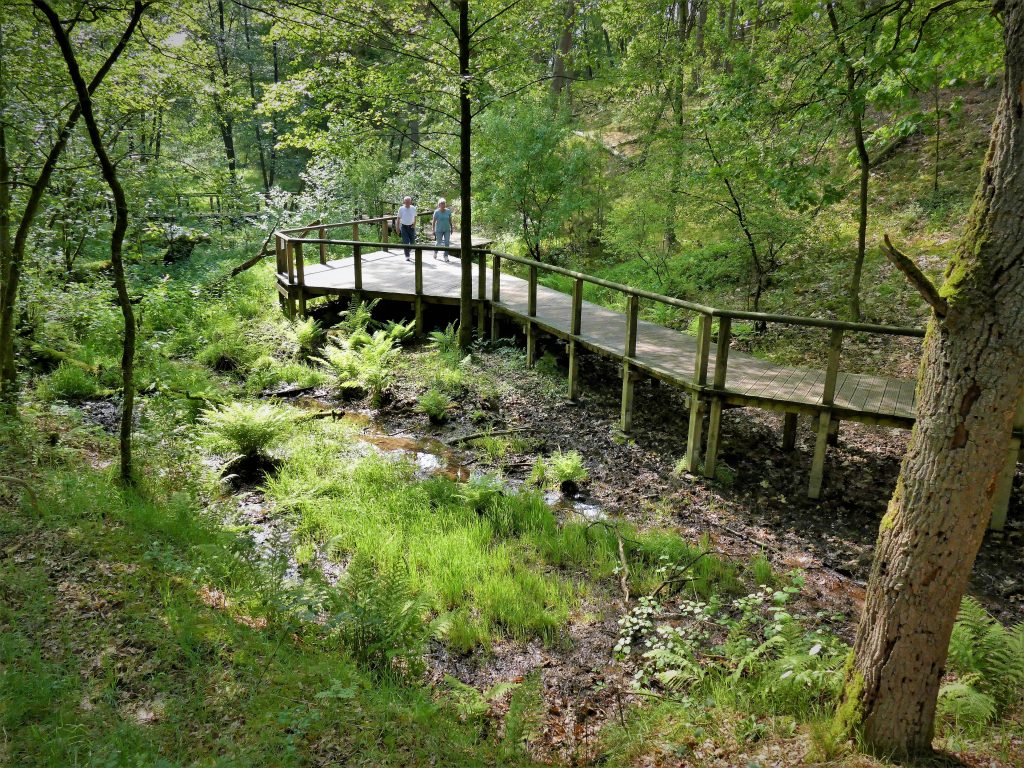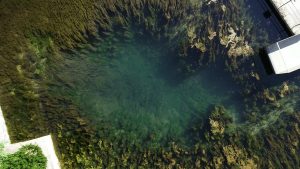The Ems sources
Compared to the sources of Lippe and Pader, the Ems rises in the middle of the Senne. The numerous sources of the Ems therefore clearly differ from the karstic sources on the edge of the Senne. The water of the Ems emerges from the sandy soil from so-called seepage springs. The Senne sand is whirled up in the process. The karstic springs of Lippe and Pader have a solid shape due to the surrounding limestone. The sandy springs of the Ems, on the other hand, are dynamic, because the sand can be easily carried away by the flowing water. In this way, the springs gradually erode the surrounding sand layers. This process is known as retrograde erosion.
For the first few kilometres, the Ems flows westwards. From Rietberg onwards it tends more towards the north. After a distance of 371 km, it flows into the North Sea near Emden. It is therefore the eighth longest river in Germany and the longest river whose origin and mouth are in Germany, as well as the only river that runs from the source to the mouth in sand-shaped landscapes.
If you follow the Lippe beyond its source area, it flows steadily to the west and covers around 220 km before it flows into the Rhine at Wesel.
You can discover the Ems springs on the “Heideland” and “Ems-Erlebnisweg” experience tours.







